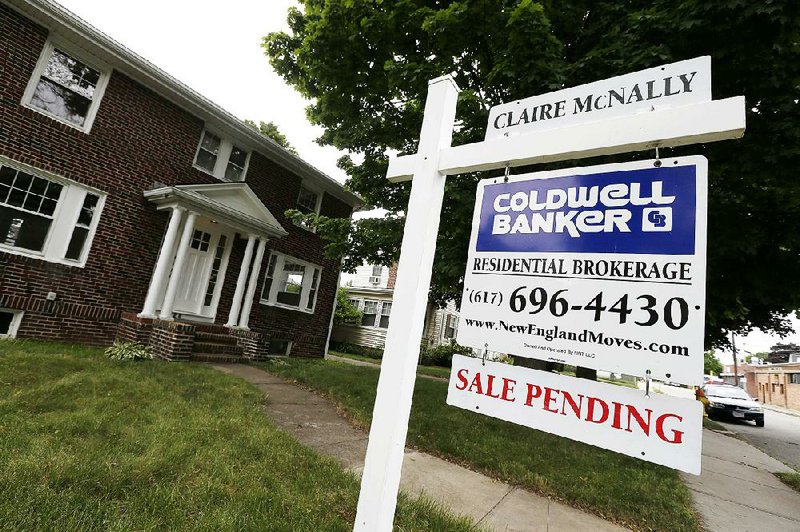WASHINGTON -- Fewer Americans signed contracts to buy homes in June, as the real estate market appears to have cooled off this summer.
The National Association of Realtors said Monday that its seasonally adjusted pending home sales index slipped 1.1 percent to 102.7 last month. The index remains 7.3 percent below its level one year ago.
"Unfortunately, I don't see much of an acceleration in housing demand going forward until we get a significant improvement in the labor market and the income part of it, in particular," said Yelena Shulyatyeva, a U.S. economist at BNP Paribas in New York who forecast a 1 percent decrease in pending sales. "An uneven recovery in the housing market is really one of the biggest concerns of the Fed."
Sales have been slowed by a mix of meager wage growth, rising home prices and mortgage rates that rose steadily through the end of last year.
Pending sales are a barometer of future purchases. A one- to two-month lag usually exists between a contract and a completed sale.
Signed contracts in June fell in the Northeast and South. They rose slightly in the Midwest and West. Pending sales in all four U.S. regions are below last year's pace.
Home sales had been improving through the middle of 2013, only to stumble over the past 12 months. Buying has decelerated despite a recent decline in mortgage rates and home prices increasing at a slower rate than last year.
Sales were disrupted initially by harsh winter weather, but the summer slowdown suggests that financial pressures are now keeping would-be buyers on the sidelines.
"The latest decline raises questions about the housing market strength after the weather-related rebound is behind us," Shulyatyeva said. "Housing will remain an area of concern" for the Federal Reserve.
New home sales fell 8.1 percent last month to a seasonally adjusted annual rate of 406,000, the Commerce Department said last week.
The Realtors group recently reported that sales of existing homes increased 2.6 percent in June to a seasonally adjusted annual rate of 5.04 million homes. It marked the first time that sales have been above the 5 million mark since October, yet the pace of buying remained below last year's level of 5.1 million.
Economists generally consider annual home sales of 5.5 million to be consistent with a healthy housing market.
Still, there are indications that sales could pick up.
Along with the arrival of spring, average mortgage rates have dropped to 4.13 percent, down from a 52-week high of 4.58 percent, according to Freddie Mac, the Federal Home Loan Mortgage Corp.
The rate of average price gains has slowed to 4.3 percent year-over-year, according to the Realtors group. That's down from gains in the double digits. But wage growth has barely kept pace with inflation, eating into how much income people have to spend and to save for down payments.
Information for this article was contributed by Victoria Stilwell of Bloomberg News.
Business on 07/29/2014

